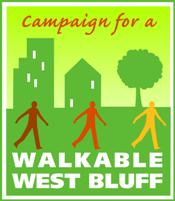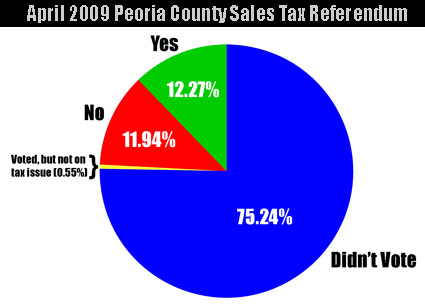In light of the serious issues on the District #150 Board of Education agenda this evening and the decision the board members are being asked by the Administration to make, let’s take the time to review some accurate data. (Note: this data is extracted from the Interactive Illinois Report Card, found at http://iirc.niu.edu/District.aspx?districtID=48072150025)
- District #150 Overall (2008):
Student Demographics:
Black 61.1%
White 30.5%
Hispanic 5.5%
Asian 2.6%
Multiracial 0.2%
Native American 0.0%
Low Income: 70%
District Spending vs. State Average (2006-07)
District State
Teacher Salaries/Benefits 48.9% 43.0%
Other Instructional Costs 3.8% 7.1%
Student Support 12.8% 11.6%
Admin/Operations 24.0% 22.7%
Building/Equipment 2.4% 7.4%
Debt Service 5.6% 7.1%
Other 2.5% 1.1%
- Kingman Primary School (2008):
Student Demographics:
Black 57.6%
White 32.2%
Hispanic 10.2%
Asian 0.0%
Multiracial 0.0%
Native American 0.0%
Enrollment: 304
Average Class Size:
Kindergarten 16.0
Grade 1 15.3
Grade 2 16.7
Grade 3 13.7
Grade 4 13.5
Grade 5 13.0
Low Income: 93.1%
Mobility: 61.4%
Adequate Yearly Progress:
The school is not making AYP.
The school is not making AYP in Reading.
The school is making AYP in Mathematics.
The school was identified for School Improvement in accordance with NCLB.
The 2008-09 the Federal Improvement Status is Choice.
The 2008-09 State Improvement Status is Academic Early Warning Year 1.
- Irving Primary School (2008):
Student Demographics:
Black 69.3%
Hispanic 22.9%
White 6.1%
Asian 1.1%
Multiracial 0.6%
Native American 0.0%
Enrollment: 362
Average Class Size:
Kindergarten 17.0
Grade 1 15.6
Grade 2 15.6
Grade 3 16.2
Grade 4 18.3
Grade 5 17.7
Low Income: 95.6%
Mobility: 35.1%
Adequate Yearly Progress:
The school is not making AYP.
The school is not making AYP in Reading.
The school is making AYP in Mathematics.
The school was identified for School Improvement in accordance with NCLB.
The 2008-09 the Federal Improvement Status is Choice.
The 2008-09 State Improvement Status is Academic Early Warning Year 1.
- Garfield Primary School (2008):
Student Demographics:
Black 74.9%
White 17.1%
Hispanic 7.4%
Asian 0.3%
Multiracial 0.3%
Native American 0.0%
Enrollment: 299
Average Class Size:
Kindergarten 11.0
Grade 1 17.0
Grade 2 18.3
Grade 3 19.3
Grade 4 15.3
Low Income: 94.0%
Mobility: 45.6%
Adequate Yearly Progress:
The school is not making AYP.
The school is not making AYP in Reading.
The school is making AYP in Mathematics.
The school was identified for School Improvement in accordance with NCLB.
The 2008-09 the Federal Improvement Status is Restructuring.
The 2008-09 State Improvement Status is Academic Early Warning Year 2.
- Tyng Primary School (2008):
Student Demographics:
Black 87.1%
White 9.2%
Hispanic 3.1%
Asian 0.5%
Multiracial 0.0%
Native American 0.0%
Enrollment: 381
Average Class Size:
Kindergarten 16.8
Grade 1 19.3
Grade 2 14.4
Grade 3 19.4
Grade 4 13.3
Grade 5 19.0
Low Income: 96.9%
Mobility: 59.4%
Adequate Yearly Progress:
The school is not making AYP.
The school is not making AYP in Reading.
The school is not making AYP in Mathematics.
The school was identified for School Improvement in accordance with NCLB.
The 2008-09 the Federal Improvement Status is Choice SES.
The 2008-09 State Improvement Status is Academic Early Warning Year 2.
Of the four schools cited above that the Board of Education is considering closing, 93% – 97% of the student populations are low income and 68% – 94% of the student populations are minorities. All four schools are Title I schools; the District’s past practice to determine Title I qualification is to base it on the applications received for the Free and Reduced Lunch Program.
All four schools are not making Adequate Yearly Progress and are in the State Improvement Academic Early Warning Status. Because they are Title I schools, they have also been identified for Federal Improvement Status ranging from Choice to Restructuring.
Since the 2004-05 school year, what has this Administration and Board done? They closed Blaine Sumner and White Middle Schools, and tonight they are proposing the closing of Kingman Primary School at the end of the 2008-09 school year and Irving Primary School at the end of the 2009-10 school year. Garfield and Tyng Primary Schools are also being considered for closing. They plan to build two new Community Schools (Glen Oak and Harrison), and have discussed some sort of consolidation with the Lincoln and Woodruff campuses to address the needs of the Kingman, Irving, and Lincoln students.
Behind all the passionate rhetoric, both opposing and supporting the District’s plans, one thing is clear: all the schools targeted for closure are south of the invisible Forest Hill-War Memorial Drive boundary.
These neighborhood schools are not to be individually replaced with new facilities; rather the Administration is recommending to the Board of Education that these neighborhood schools be combined into much larger community schools. The rationale behind this is financial. These decisions are not based on what is in the best interest of the students’ education, as stated by Board Vice President Wolfmeyer in the Sunday, April 19th Peoria Journal Star.
A pattern is emerging. The District has targeted the schools with the highest numbers of low income and minority students, and schools not making AYP in both State and Federal improvement status, to close and combine. These schools receive significant Title I funding to supplement the educational services provided the students, including funding for teachers’ salaries.
No schools north of the Forest Hill-War Memorial Drive invisible boundary have been targeted for closure.
Whether they wish to acknowledge it or not, by their recommendations and actions, the Administration and Board of Education are creating a perception of warehousing the minority children and the children of poverty.
There is another name for this practice, segregation.
–PrairieCelt

 I recently received this update in my inbox and wanted to share it with my readers:
I recently received this update in my inbox and wanted to share it with my readers: